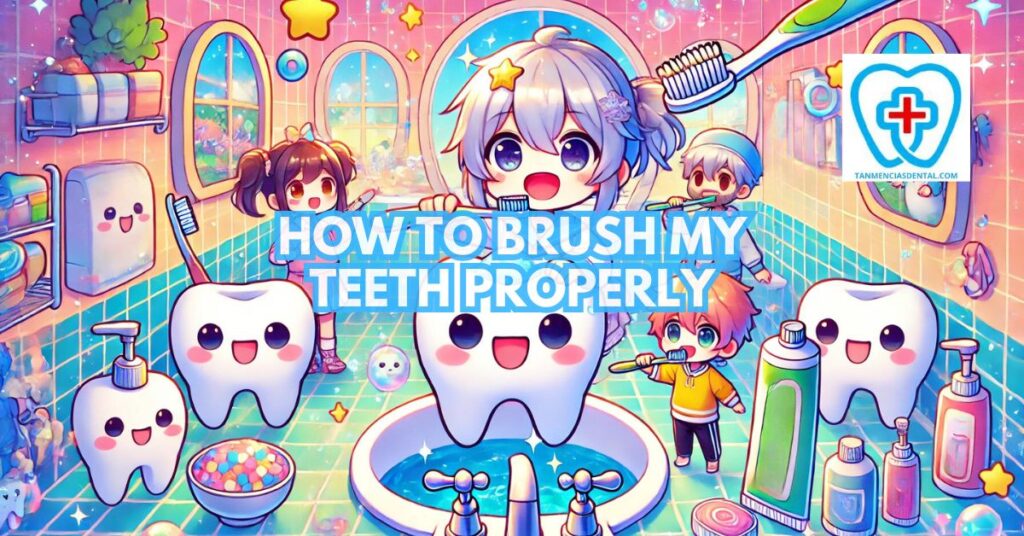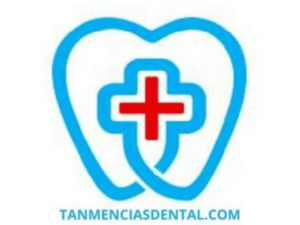Knowing how to brush my teeth properly is essential for keeping your teeth and gums healthy.
Brushing isn’t just about moving a toothbrush around; it’s about using the right methods to clean every part of your mouth.
This helps remove plaque, a sticky film of bacteria that can cause cavities and gum disease.
Good brushing habits also help prevent bad breath and keep your smile bright.
You’ll learn step-by-step techniques to improve your brushing routine and protect your oral health for years to come.
1. Brushing Essentials: Gear Up for a Healthy Smile
Selecting the right tools for effective oral care is crucial to maintaining a healthy smile.
A toothbrush with soft bristles is highly recommended because it is gentle on the gums while being robust enough to thoroughly remove plaque.
It’s important to use fluoride toothpaste, which plays a key role in remineralizing teeth and making them more resistant to decay.
The design of the toothbrush handle should be ergonomic, allowing for comfortable gripping and easy maneuvering to reach all areas of your mouth, ensuring no spot is missed.
Additionally, an electric toothbrush can be a significant asset in your dental care routine; its automated brushing motions are particularly effective in reducing plaque and preventing gingivitis.
When brushing, use the right brushing technique by angling bristles toward the gum line and using gentle, circular motions to cover each tooth surface.
This method helps target the areas where plaque can accumulate and lead to dental issues, promoting a cleaner, healthier mouth.
🦷 Is Brushing Teeth with Salt and Toothpaste Safe?
2. The Two-Minute Rule: Mastering the Right Brushing Time
Brushing your teeth for two full minutes is a simple but crucial step in maintaining good oral health.
This time frame ensures that every area of your mouth gets enough attention, reducing the risk of plaque buildup and tooth decay.
Dental hygienists often recommend splitting your mouth into four sections—upper right, upper left, lower right, and lower left—and brushing each for 30 seconds.
Whether you use a manual toothbrush or an electric one, sticking to the two-minute rule can greatly improve the effectiveness of your toothbrushing routine.
A timer or an electric toothbrush with a built-in timer can help you stay on track and make sure you’re not rushing.
Following this guideline not only keeps your teeth clean but also supports healthy gums.
Remember, consistent and thorough toothbrushing is a key part of a strong oral care routine.
🦷 Can You Brush Your Teeth with Vinegar? Pros, Cons, and Alternatives
3. Angling for Success: The Perfect Brushing Technique for Plaque Removal
For optimal plaque removal, position the brush at a 45-degree angle to the gums.
This angle allows the bristles to effectively reach into the small gaps between the teeth and gums, targeting plaque buildup.
When applying toothpaste to your brush, choose a fluoride-based toothpaste that helps protect against decay while strengthening enamel.
Use gentle, circular motions to brush the teeth, as these movements help dislodge plaque without irritating the gums or damaging the enamel.
Pay special attention to tilting the brush so you can effectively clean the inside surfaces of the teeth, where plaque often goes unnoticed.
Avoid a back-and-forth sawing motion, as this can be too harsh on the gums and enamel, leading to potential damage.
Regularly employing this right brushing technique can significantly reduce the risk of gingivitis and tooth decay, maintaining your oral health.
🦷 The Importance of Community Dental Care
4. Conquering Every Surface: Proper Brushing Technique for a Clean Mouth
It’s essential to brush all tooth surfaces to ensure a comprehensive clean.
Focus on the outer surfaces, inner surfaces, and chewing surfaces of your teeth.
Use back-and-forth strokes on the chewing surfaces and circular or vertical strokes on the inner and outer surfaces.
Ensure that your brush reaches the back teeth, as these are often neglected and are susceptible to plaque buildup.
By systematically covering every surface, you reduce the risk of cavities and promote overall oral hygiene.
🦷 The Surprising Benefits of Salt for Teeth

5. Taming the Tongue: Brushing Your Tongue for Fresh Breath and Dental Health
Brushing your tongue can significantly improve your oral health and eliminate bad breath.
Start at the back of the tongue and gently brush forward to remove the bacteria and food particles that reside there.
Use a toothbrush with a built-in tongue scraper for optimal results, as it’s designed to effectively clean the surface of the tongue.
Regular tongue brushing prevents the growth of bacteria that can lead to oral health issues and bad breath.
Incorporating this step into your daily routine ensures a cleaner mouth and a fresher breath.
🦷 Can a Broken Tooth Cap Be Repaired?
6. Flossing: Your Partner in Clean Teeth
Flossing is a critical component of dental hygiene that complements brushing by removing plaque and food particles from between the teeth and below the gumline.
Use a gentle sawing motion to bring the floss between the teeth without snapping it, which can harm the gums.
Wrap the floss around each tooth in a “C” shape and gently move it up and down, conforming to the shape of the tooth.
Regular flossing helps prevent gum disease and cavities, especially in areas that a toothbrush cannot reach.
Making flossing a daily habit is crucial for thorough dental care and the prevention of disease.
🦷 How to Brush Your Teeth at Work
7. How Your Diet Affects Your Teeth
What you eat and drink has a big impact on your dental health.
Eating too much sugar can cause tooth decay because it feeds the bacteria that create plaque on your teeth.
Acidic foods and drinks, like citrus fruits and sodas, can wear down your tooth enamel, making your teeth weaker.
Choosing tooth-friendly foods, such as dairy products rich in calcium and crunchy vegetables, helps keep your teeth strong and healthy.
Drinking plenty of water also helps wash away food particles and keeps your mouth clean.
🦷 How to Fix an Overbite Without Braces
8. A Healthy Routine: Brushing Twice a Day for Optimal Oral Health
Brushing your teeth twice a day is fundamental for preventing the accumulation of plaque and maintaining oral health.
Morning brushing eliminates the bacteria that multiply overnight, while brushing before bedtime prevents food particles and plaque from sitting on your teeth all night.
This routine helps prevent the progression of gum disease and reduces the risk of tooth decay.
Ensure each session lasts at least two minutes and includes proper technique to maximize effectiveness.
Adhering to this routine not only keeps your teeth clean but also contributes significantly to your overall health.
🦷 Can You Brush Your Teeth with Salt? The Truth
9. Replacing Your Toothbrush Regularly: Fresh Bristles for Effective Brushing
Replacing your toothbrush every three to four months is crucial for maintaining effective brushing capabilities.
Worn or frayed bristles cannot clean teeth as effectively and may harbor harmful bacteria that can lead to oral infections.
If you notice bristle wear before the three-month mark, replace your brush sooner, especially after an illness.
An effective toothbrush with fresh bristles reaches more easily between teeth and along the gumline, enhancing plaque removal.
Keeping track of the replacement time can be managed easily by starting each new season with a new toothbrush.
🦷 Why Quarterly Dental Cleanings Matter
10. Gentle on Your Gums: Using the Right Brushing Pressure to Avoid Irritation
Using gentle pressure during brushing protects your gums from irritation and damage, which can lead to receding gums over time.
A light touch is sufficient to remove plaque without harming the soft tissue of the gums.
If your toothbrush bristles splay out before three months of use, you may be brushing too hard.
Electric toothbrushes often come with pressure sensors that alert you when you’re brushing too hard.
Maintaining gentle pressure is key to safeguarding your gum health while thoroughly cleaning your teeth.
🦷 Are Dentists in Demand? The Future of Dental Careers
11. Special Techniques for a Sparkling Smile: Brushing with Braces or Dentures
Those wearing braces or dentures require specialized brushing techniques to maintain oral hygiene.
For braces, use an orthodontic brush or a brush with a v-cut bristle design to effectively clean around brackets and wires.
Denture wearers should brush their dentures daily with a soft-bristled brush and denture cleanser to remove food particles and plaque.
Also, consider using a floss threader for braces to clean between the wires and teeth.
These special techniques ensure that dental appliances do not become sites for plaque accumulation, thus protecting overall oral health.
👨⚕️ Conclusion
Committing to proper dental health practices is essential for a lifetime of healthy teeth and gums.
Regular brushing, flossing, and professional dental checkups play a crucial role in preventing dental diseases.
By adopting the right techniques and habits, as discussed, you can significantly lower the risk of developing oral health issues.
Remember, taking care of your mouth is an investment in your overall well-being.
Commit today to these practices for a healthier, brighter smile tomorrow.
😊 Self-Promotion
Visit us at Tan-Mencias Dental Clinic, your friendly neighborhood dental care provider in Parang, Marikina City.
We’re here to ensure you receive top-quality dental care in a comfortable and welcoming environment.
Have questions or want to schedule an appointment?
Feel free to call us at 9171451074, send a message through our Facebook page, or use the contact form on our website.
We look forward to helping you achieve your brightest, healthiest smile at Tan-Mencias Dental Clinic!

